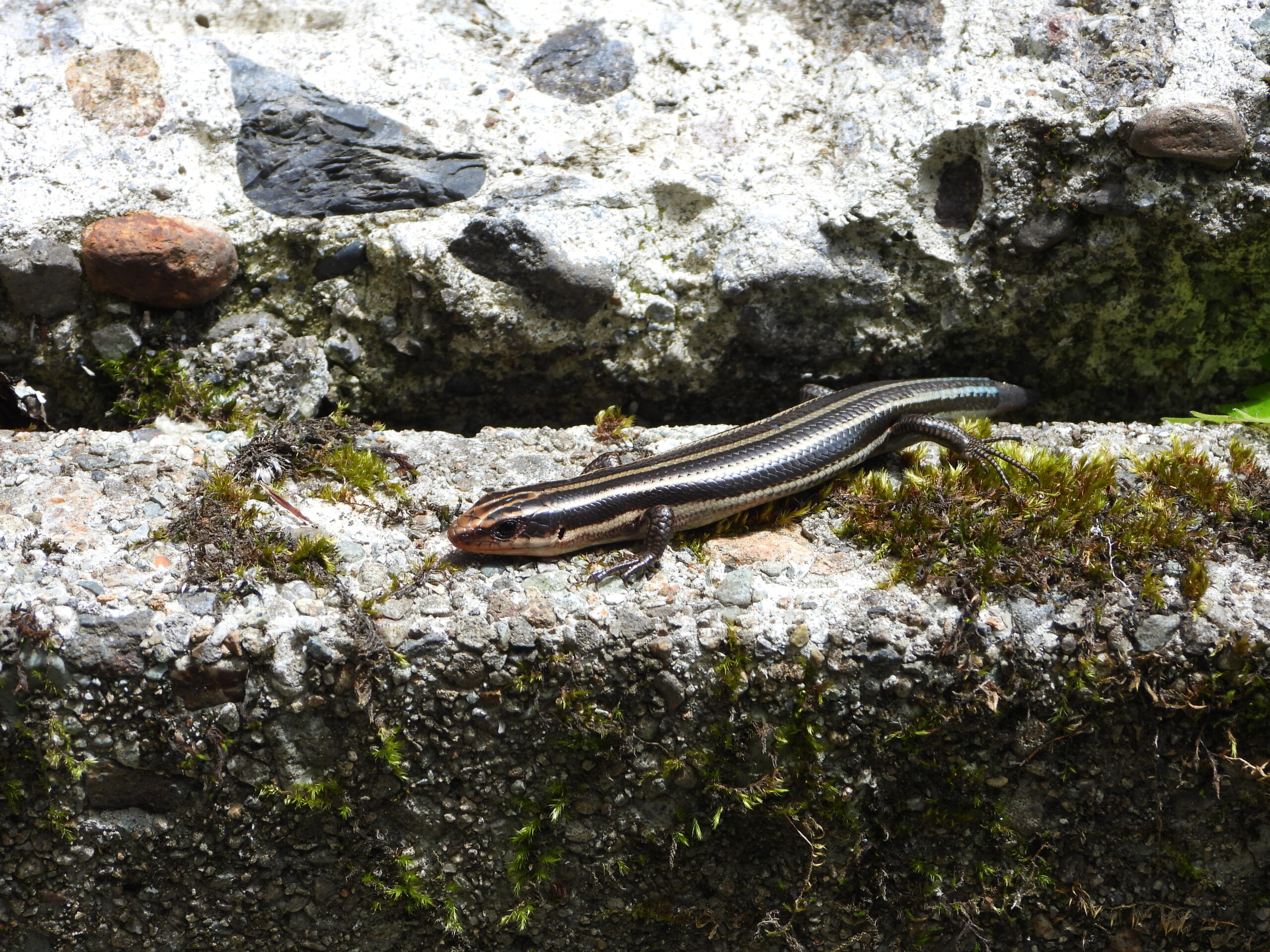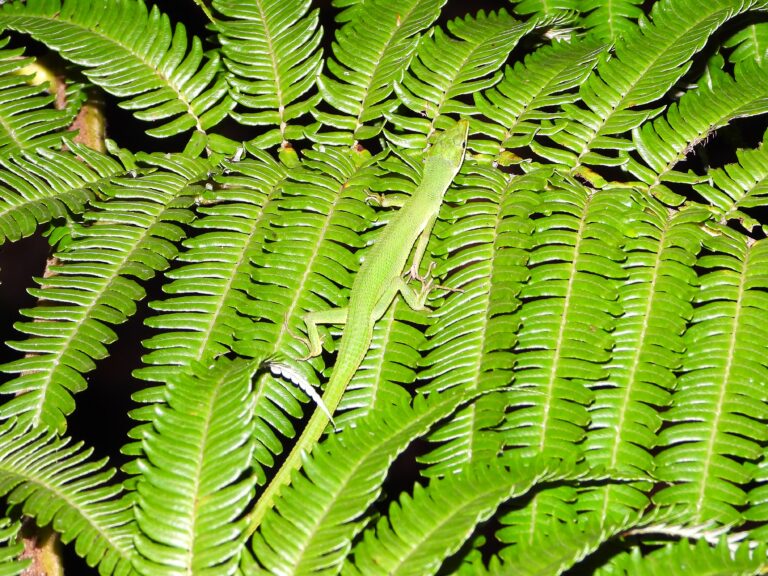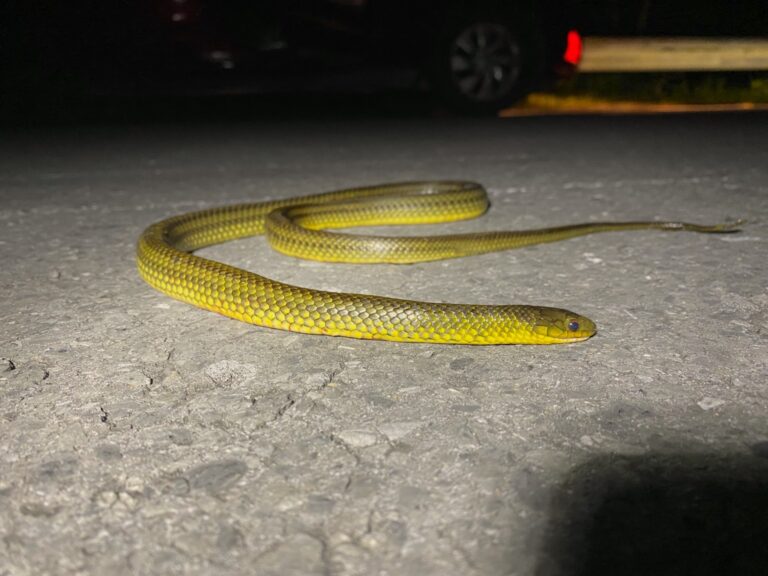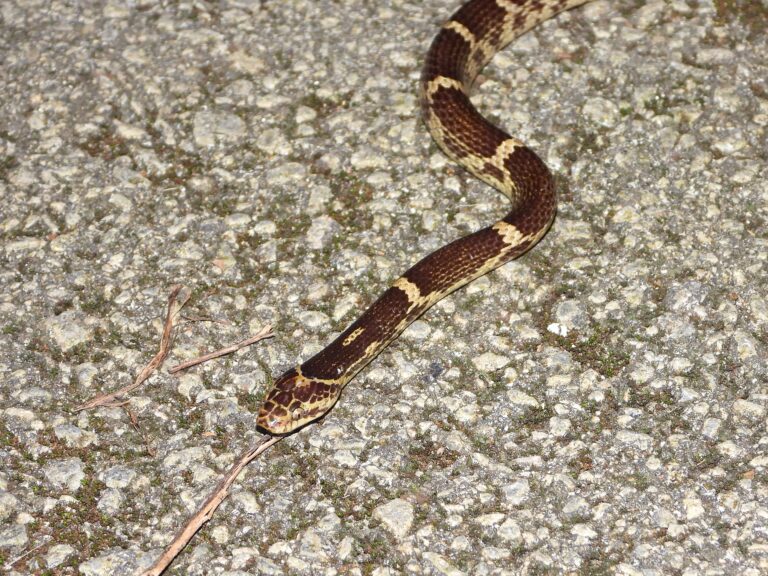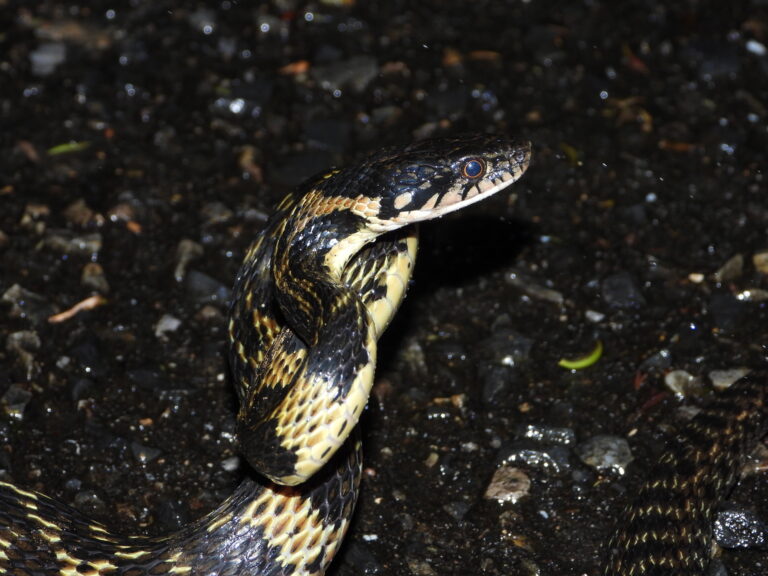Far Eastern Skink (Plestiodon finitimus) – Wildlife of Japan
Introduction
The Far Eastern Skink (Plestiodon finitimus) is a small, glossy reptile native to eastern Japan. Once grouped with the Japanese Skink (Plestiodon japonicus), it was recognized as a distinct species in 2012 based on genetic and morphological studies. Its smooth, shiny scales and bright blue-tailed juveniles make it one of the most familiar reptiles in Japan’s warm, sunny habitats.
Appearance
Juveniles are strikingly black with five pale longitudinal stripes and a vivid blue tail. As they mature, the coloration changes to brown with faint stripes, and males often develop an orange hue around the head during the breeding season. Adults typically measure about 20–25 cm in total length, including the tail. The body is sleek and smooth, reflecting sunlight with a metallic sheen.
Habitat & Distribution
This species occurs across eastern Honshu and Hokkaido, inhabiting sunny slopes, forest edges, rock piles, and even residential gardens. It prefers ground-level areas with good sun exposure and plenty of hiding spots such as stones, logs, and gaps in walls. It is mainly terrestrial and often seen basking on warm rocks or pavement during the day.
Behavior
The Far Eastern Skink is diurnal and relies on sunlight to regulate body temperature. When threatened, it can shed its tail (autotomy) to escape predators—a defense mechanism common among skinks. It is agile and quick to hide in crevices. During cold months, it hibernates underground or beneath stones.
Diet
This lizard feeds on small invertebrates such as insects, spiders, and worms. Its active foraging behavior helps maintain a natural balance in the local ecosystem by controlling insect populations.
Reproduction
Breeding occurs in spring. Females lay around 6–15 eggs in early summer, usually in soil cavities beneath stones or leaf litter. Hatchlings emerge with the characteristic bright blue tails that gradually fade as they grow.
Conservation
The Far Eastern Skink remains common in many regions but faces local population declines due to habitat loss and urban development. Preserving green spaces, stone walls, and natural ground cover is important for maintaining healthy populations. It is not globally threatened but may be regionally listed as vulnerable in some prefectures.
Author’s Impression
I encountered the Far Eastern Skink along a sunny forest path in eastern Japan. Its smooth bronze body glimmered in the light, and a small blue-tailed juvenile darted into the leaves. The Far Eastern Skink is a familiar reptile to me; I often see them basking on top of stone walls on warm days. To spot one yourself, look carefully around stones or garden walls—you might catch a brief flash of blue disappearing into the shadows.

